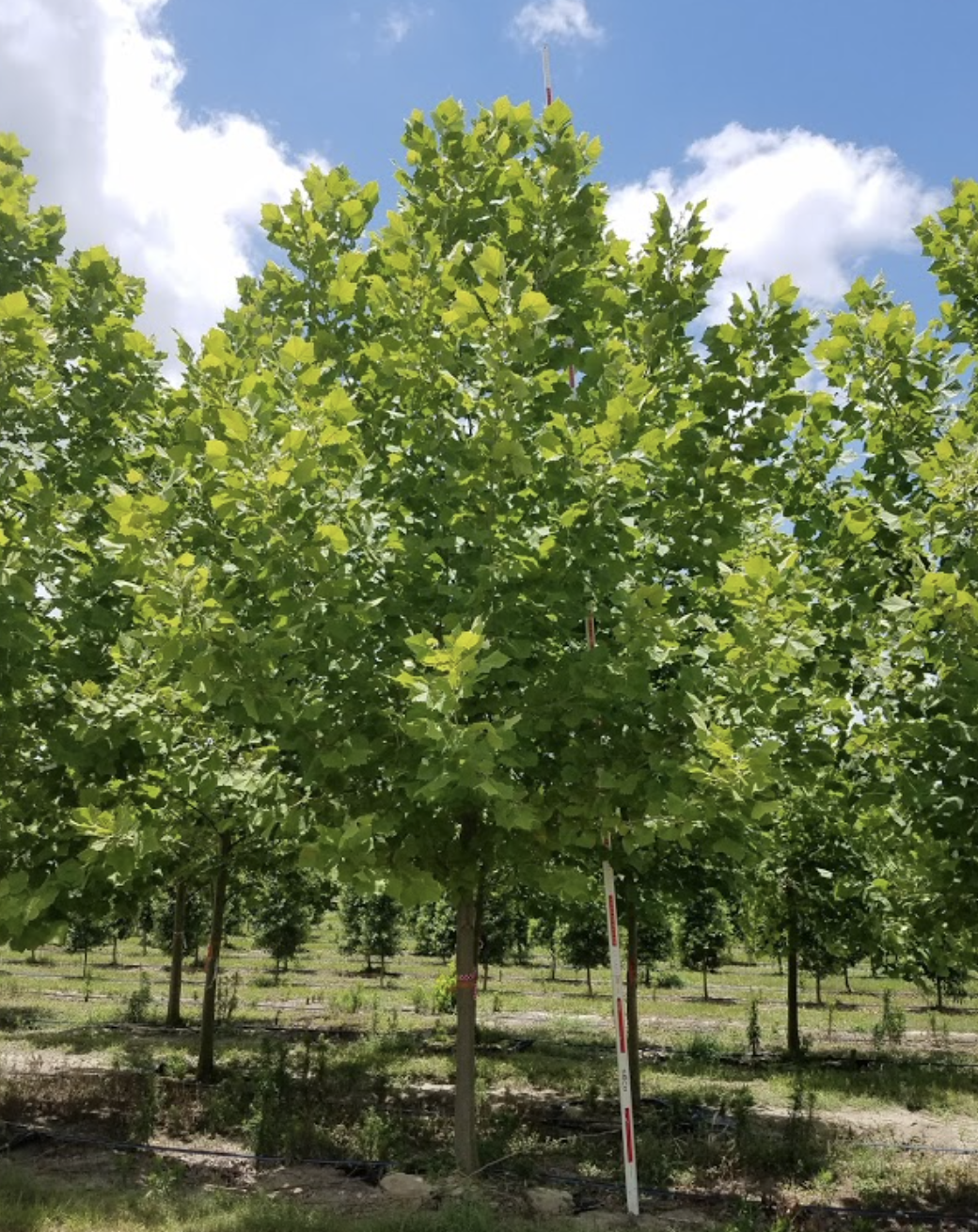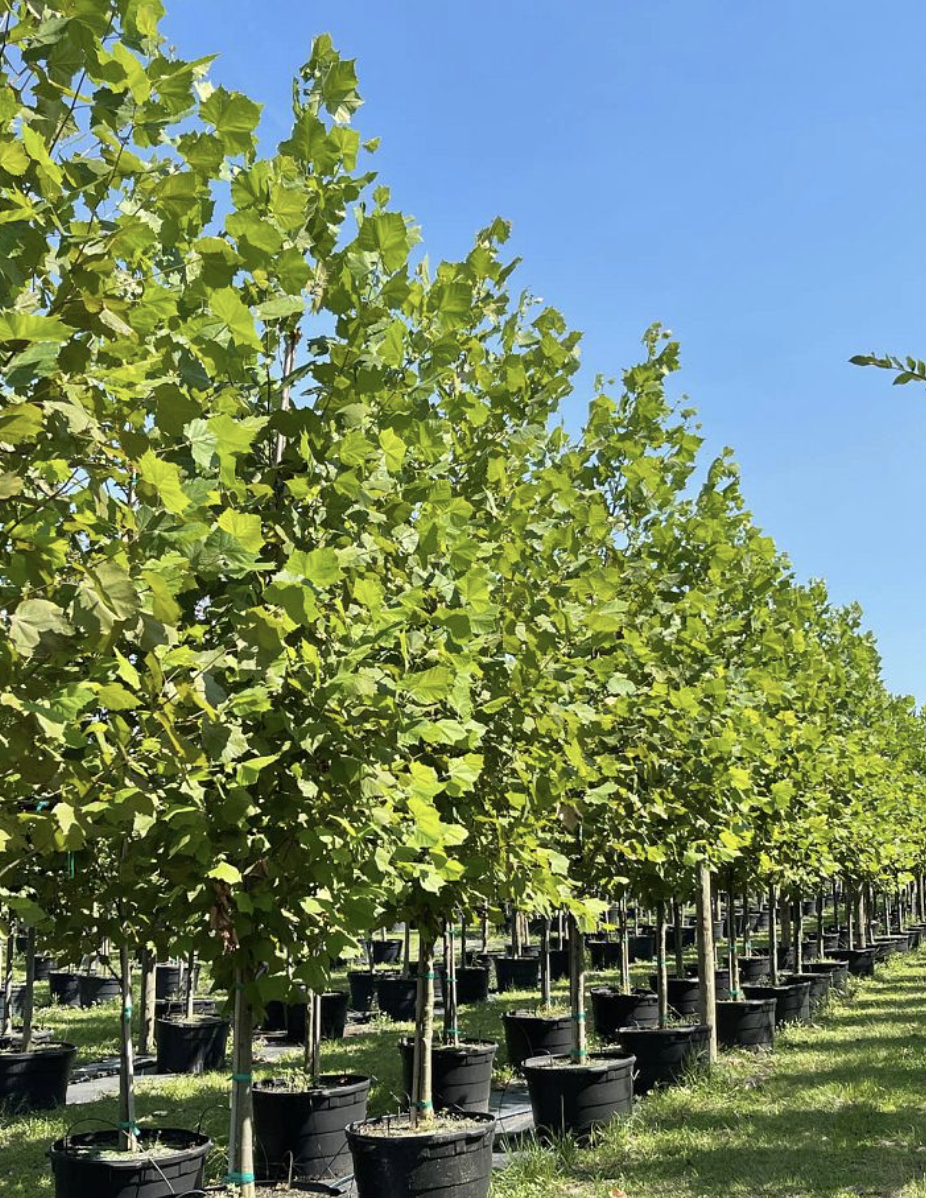Sycamore Tree
PLATANUS OCCIDENTALIS: SYCAMORE
Description
Sycamore is a massive tree reaching 75 to 90 feet in height, has a rapid growth rate, and tolerates wet and compacted soil. The white bark peels off in patches and is the most ornamental trait. Pyramidal in youth, it develops a spreading rounded or irregular crown with age, supported by a few very large diameter branches. These branches should be spaced two to four feet apart along the trunk to develop a strong structure. The dominant central leader which typically develops on Sycamore usually assures that the structure of major limbs is desirable with little corrective pruning required other than removing occasionally-occurring, upright, aggressive branches with tight crotches. It is also helpful to thin out the many branches which develop early on the central trunk.
Height: 75 to 90 feet
Spread: 50 to 70 feet
Crown uniformity: symmetrical
Crown shape: pyramidal, round, spreading
Crown density: dense
Growth rate: fast
Texture: coarse


Culture
Light requirement: full sun Soil tolerances: clay; sand; loam; alkaline; acidic; wet to well-drained Drought tolerance: high Aerosol salt tolerance: moderate
Features
They are best suited for soils which are moist and do not dry out. Dry soil can lead to short life for this wet-site-tolerant tree. Sycamore has been cursed by horticulturists and others because it is said to be messy, dropping leaves and small twigs throughout the year, particularly in dry weather. However, the tree grows in places which appear most unsuitable to plant growth, such as in small cut out planting pits in sidewalks and in other areas with low soil oxygen and high pH. Unfortunately, aggressive roots often raise and destroy nearby sidewalks. The dense shade created by the tree's canopy may interfere with the growth of lawn grasses beneath it. In addition, the leaves which fall to the ground in autumn reportedly release a substance which can kill newly planted grass. Best not planted in yards due to messy habit, it should be saved for the toughest sites and supplied with some irrigation in drought. Allow at least 12 feet (preferably more) of soil between the sidewalk and curb when planting as a street tree.
Diseases
Some fungi cause leaf spots but are usually not serious. Anthracnose causes early symptoms on young leaves resembling frost injury. When the leaves are almost fully grown light brown areas appear along the veins. Later the infected leaves fall off and trees may be nearly completely defoliated. The disease can cause twig and branch cankers. The trees send out a second crop of leaves but repeated attacks can lower tree vigor. Use a properly labeled fungicide according to the latest recommendations. Fertilization helps trees withstand repeated defoliation. Powdery mildew causes a white fuzz on the tops of leaves and distorts leaves. A bacterial leaf scorch can kill the tree in several growing seasons, and can cause significant tree losses. Leaves appear scorched, become crisp, and curl up as they turn a reddish-brown. Stress cankers form on limbs of trees stressed with drought.
Florida’s Premiere Tree Installer, The Tree Planters located in Lakeland, is your #1 source for large, rare, and exotic palms and trees. At The Tree Planters, we have installed and transplanted thousands of large trees of every variety all over Florida for over 50 years. Every tree we sell, we plant. Every tree we plant, we guarantee for One Full Year.
Delivery is included in the price of your tree. We proudly serve the entire state of Florida. (All other delivery fees will be quoted at time of purchase), and a One-Year Guarantee on every tree planted by The Tree Planters.